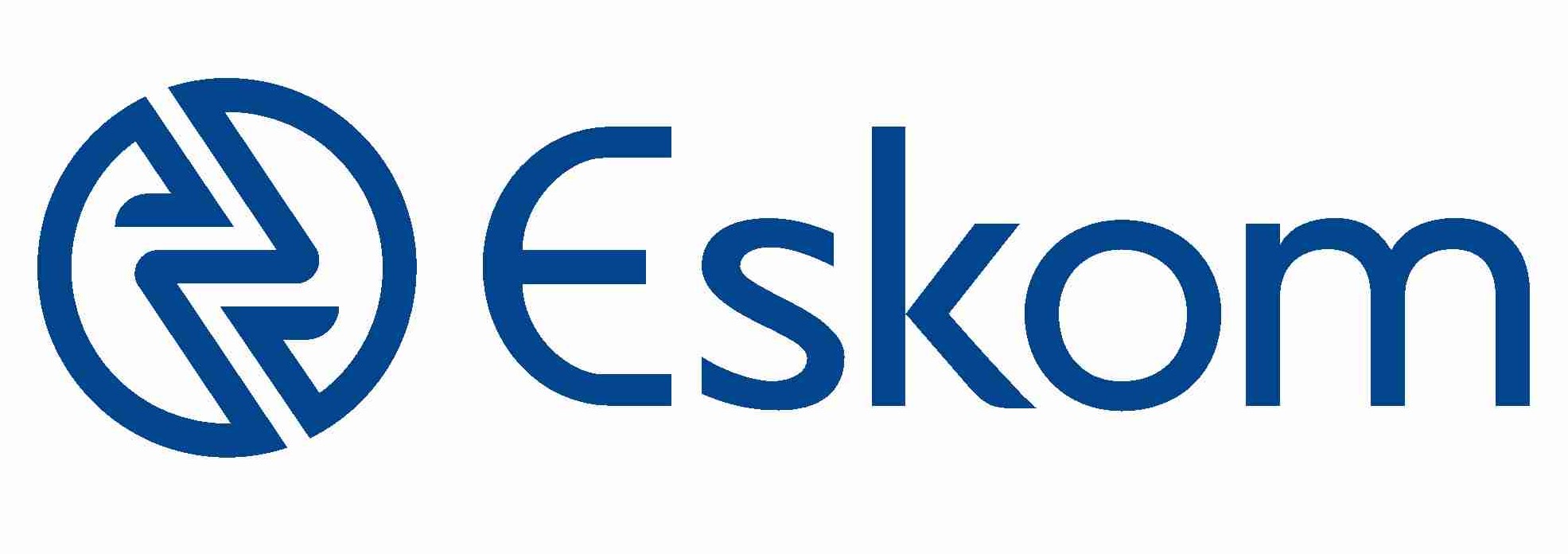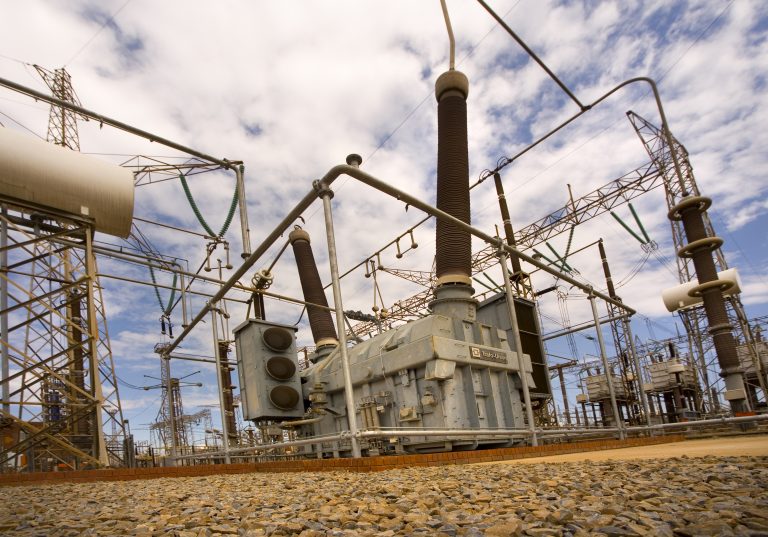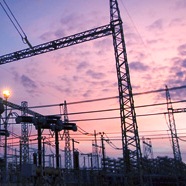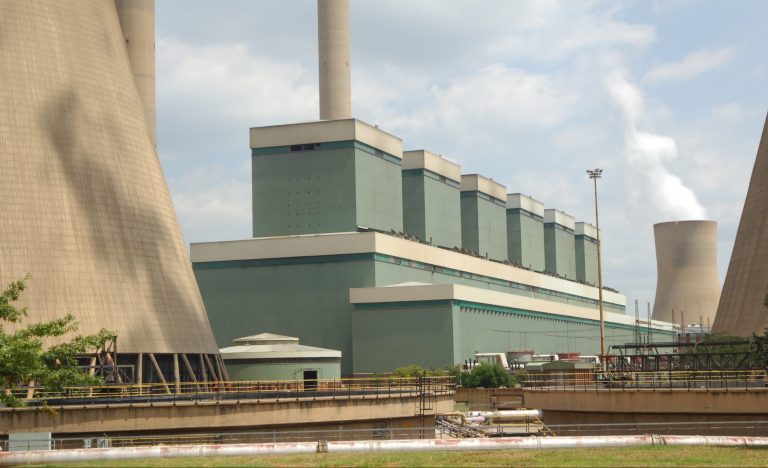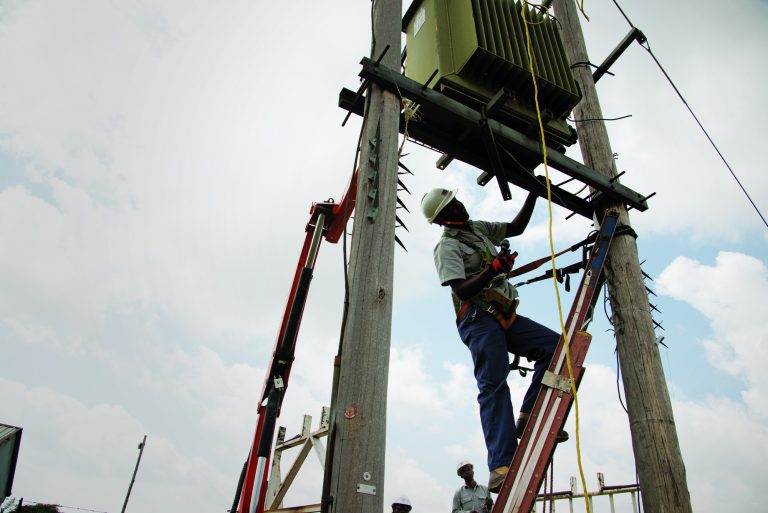Implementing the turnaround strategy returns Eskom to profitability for the first time in 8 years, profit before tax of R23.9 billion to be invested back into the business for critical infrastructure and energy security
- Profit before tax of R23.9 billion (2024: loss of R25.5 billion*) – marking the first return to profitability since FY2017 – underpinned by a stronger EBITDA margin of 29.05% (2024: 14.67%), supported by a 12.74% standard tariff increase and a 14% reduction in primary energy costs, driven by improved coal plant reliability and reduced reliance on expensive Open-Cycle Gas Turbines (OCGT), resulting in year-on-year diesel savings of R16.3 billion.
- Energy not supplied as a result of loadshedding declined significantly to below 0.4TWh (2024:13.2TWh). This corresponds to a total loadshedding duration of 175 hours (2024: 6 367 hours) and a decrease in the number of loadshedding days to just 13 (2024: 329 days). Consequently, Eskom was able to supply electricity on 96% of the days in the reporting period (2024: 9%).
- Recovery of previously disallowed fuel levy rebates from SARS provided a further boost to earnings and liquidity. After adjusting for this once-off recovery, Eskom recorded a normalised profit before tax of R11.9 billion.
- Through enhanced focus and Board oversight, improvements in audit outcomes, although not yet meeting stakeholder expectations, demonstrate action taken with approximately 90% of all external audit findings raised since FY2021 to FY2024, closed, subject to audit verification.
Tuesday, 30 September 2025: Eskom has announced its group annual results for the 2025 financial year ended 31 March 2025. Eskom started with its turnaround strategy in FY2024, with the FY2025 results demonstrating the recovery of operational and financial performance. “Eskom is increasingly a sustainable, investable company ready to compete in a liberalised, competitive energy market, and is very different from the crisis that in October 2022 the current Eskom Board inherited when they took office. The comprehensive diagnostic review at the time reaffirmed Eskom’s strategic direction and highlighted the need to recalibrate execution timelines and intensify delivery against strategic objectives that we have supported the Executive Committee to deliver,” said Mteto Nyati, Eskom Chairman.
“The Board has remained utterly focused on using public money efficiently, and early interventions in governance and controls have delivered early measurable improvements in the fight against crime, fraud and corruption. Vending fraud as a result of our outdated Online Vending System (OVS) is now reduced to lower levels, proving that a focus on stronger systems, smarter technology, and decisive action is protecting revenue and ensuring secure, reliable electricity for all South Africans, and we will continue to intensify our focus in this area,” Nyati continued.
“Following years of constrained performance, we are beginning to see the tangible benefits of our recovery strategies, with marked improvements across key financial metrics driven by the operational turnaround. As Eskom stabilises, the migration towards a more appropriate tariff path that balances customer affordability with Eskom’s financial sustainability is a key priority to ensure the sustainability of the industry. This is necessary to support the competitiveness of energy-intensive users and safeguard vulnerable sectors,” said Calib Cassim, Eskom Chief Financial Officer.
“Regulatory uncertainty and the absence of a long-term tariff trajectory continue to impede strategic planning for the electricity supply industry, our customers and investors. We require predictability to foster investment in South Africa. With the support of the Minister of Electricity and Energy, we will continue to engage with NERSA and other stakeholders on establishing a predictable long-term tariff outlook. Eskom is also supporting the restructuring of the electricity supply industry into a rules-based competitive market where players can compete fairly,” Cassim continued.
“Eskom’s stability and performance are vital to South Africa’s growth and development, through sustained economic growth and job creation. The focused and ongoing efforts of Eskom’s 42 000 employees in delivering the turnaround strategy have produced tangible results. According to a report by the Council for Scientific and Industrial Research (CSIR), titled Utility-scale Power Generation Statistics in South Africa, published on 17 March 2025, the South African economy lost up to R2.8 trillion due to loadshedding in the 2023 calendar year. In 2024, that figure was reduced by 83% to R481 billion,” said Eskom Chief Executive, Dan Marokane.
“We are reinvesting profits back into national assets. Over the next five years, with continued rigorous focus, we will invest more than R320 billion in sustaining and expanding our infrastructure for the long-term benefit of the nation. In a break from the past, we are accelerating the review and restructuring of our cost base. This is being done within the framework of the expected future single-digit tariff increases allowed by NERSA, as we drive efficiencies and take control of the factors within our control to address the affordability of electricity,” concluded Marokane.
Municipal arrear debt stood at R94.6 billion as of 31 March 2025 – a 27% increase from the previous year (2024: R74.4 billion). Despite the implementation of the National Treasury’s municipal debt relief programme, the growth has not slowed. Most participating municipalities are failing to meet the basic requirement of paying their current accounts on time and in full. This situation poses a serious risk to the viability of Eskom’s standalone Distribution company and threatens progress in the broader legal separation process.
Eskom continues to engage with the Government to explore alternative interventions, including prepaid supply models as well as Eskom’s proactive intervention of implementing distribution agency agreements to capacitate municipalities and improve both revenue collection and service delivery.
In an ongoing focus on efficiency, the Cost Optimisation and Revenue Enhancement (CORE) programme, overseen by the newly established Strategic Delivery Unit, is targeting cumulative efficiencies of over R50 billion by FY2029 through revenue growth, procurement efficiencies, primary energy optimisation, digital transformation and capital productivity.
Addressing a qualified audit opinion
Eskom received a qualified external audit opinion for FY2025 due to incomplete or inaccurately maintained records in terms of the Public Finance Management Act (PFMA). These records did not comply with legislative requirements relating to irregular expenditure and losses due to criminal conduct. Issues raised in the prior year’s audit qualification were not adequately addressed and continued into 2025. Several internal control deficiencies were also highlighted.
Furthermore, there is material uncertainty regarding Eskom’s going concern status, driven by dependence on government support, uncertainties related to operational assumptions and regulated revenue by NERSA, as well as growing municipal arrear debt and energy losses.
To accelerate progress in strengthening Eskom’s control environment and achieving the standards required for an unqualified audit opinion, the Executive Committee launched a three-year Audit Recovery Programme following the conclusion of the FY2024 audit in December 2024.
The programme is governed by the Audit Recovery Oversight Committee, chaired by the Group Chief Executive (GCE), to ensure executive-level accountability and strategic alignment. Its primary objective is to restore the integrity of Eskom’s internal control systems, resolve recurring audit findings, and enhance audit preparedness. The programme also aims to support unqualified audit outcomes and ensure the timely publication of Eskom’s annual financial statements in line with legislative requirements.
Key focus areas include strengthening governance frameworks, fostering a culture of accountability, improving documentation and recordkeeping, and enhancing compliance with internal controls across critical business processes. Management oversight and consequence management remain central to these efforts. Eskom is also investing in digital systems and tools, while building specialist capacity across finance, assurance, and other oversight functions.
Despite being launched with only three months remaining in FY2025, the programme has already shown tangible results. Approximately 90% of external audit findings raised since FY2021 have been addressed, pending audit verification. The FY2025 finalisation of the Annual Financial Statements (AFS) was concluded earlier than the previous year; management acknowledges that progress is not acceptable to stakeholders, as the audit recovery covers a three-year timeline.
To further strengthen its ability to proactively address integrity risks, Eskom established the Group Investigations and Security Unit. This unit works in close coordination with the Ethics Office and Internal Audit to ensure a unified and robust response to incidents of crime, fraud, and corruption.
As part of its recovery strategy, Eskom has strengthened its financial capacity by onboarding additional finance professionals in key areas of the business. With foundational elements now in place, management is optimistic about achieving an unqualified audit opinion.
The organisation remains firmly committed to executing the Generation Recovery Plan, enhancing governance structures, and mitigating financial and operational risks. These efforts are aligned with Eskom’s broader objective of ensuring long-term sustainability, securing energy supply, and contributing meaningfully to South Africa’s economy and the wider region.
Notes:
*In FY 24, the loss after tax of R55 billion occurred mainly due to the derecognition of a deferred tax asset of R36.6 billion. This was triggered by the separation of the National Transmission Company South Africa SOC Ltd (NTCSA) on 31 March 2024, and it was deemed unlikely that the remaining business would generate sufficient taxable income within the next five years to fully utilise Eskom’s unused assessed tax losses. The derecognition has no impact on Eskom’s right to utilise assessed tax losses against future taxable income. The FY24 results media release can be found here, https://www.eskom.co.za/loss-before-tax-for-the-2024-financial-year-improves-by-r9-billion-to-r25-5-billion-ntcsa-separation-triggers-once-off-accounting-adjustment-leading-to-loss-after-tax-of-r55-billion-profit-forecast/
ENDS

